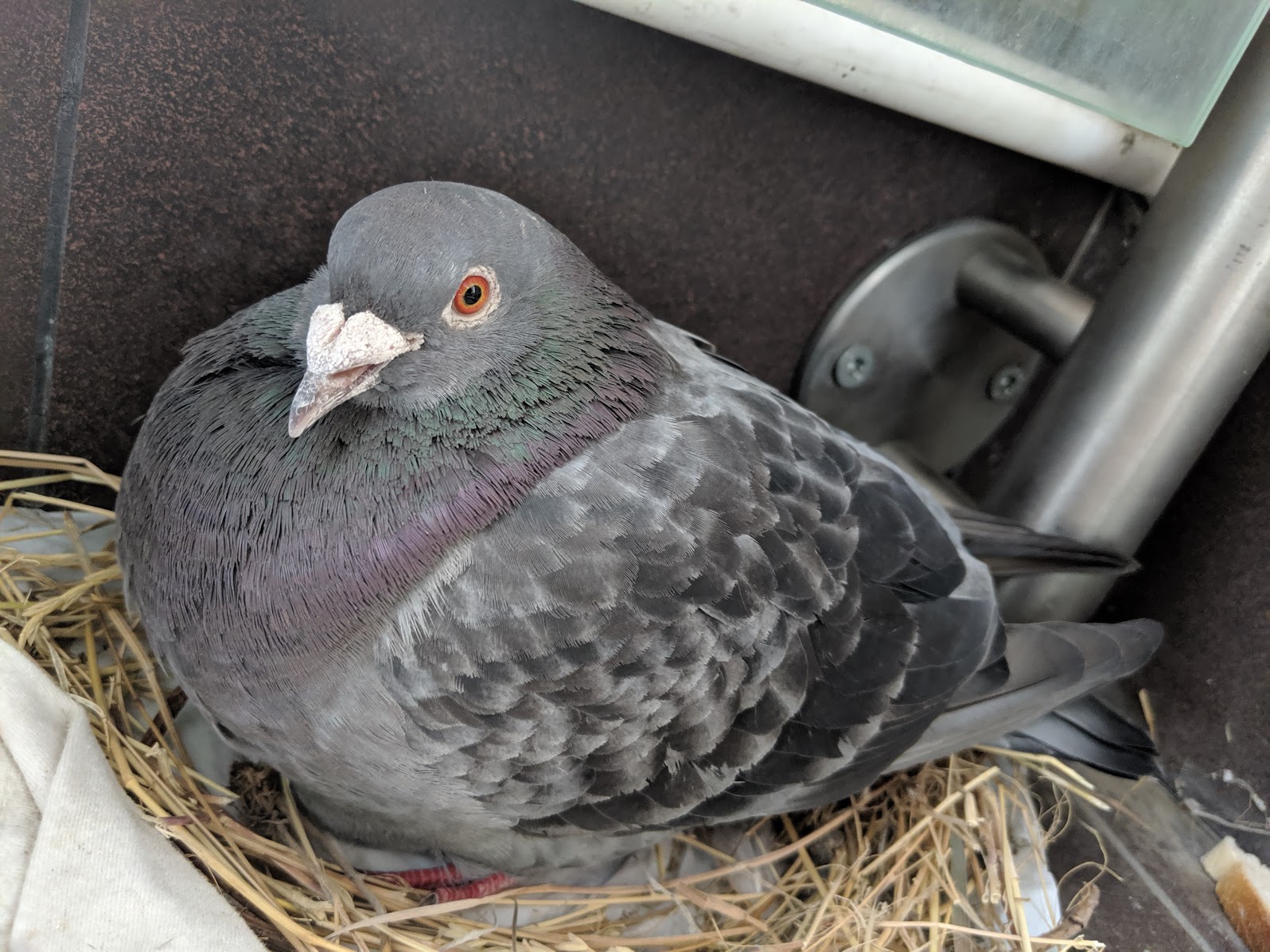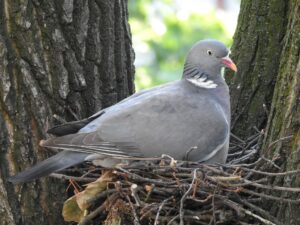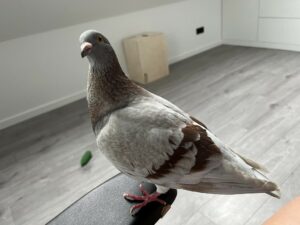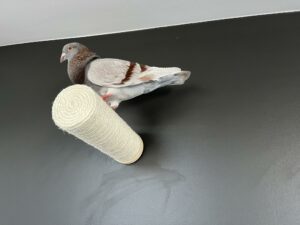As someone who has always had a soft spot for pigeons, I was overjoyed when I found a baby pigeon, whom I named Gerard, who needed rescuing.
I brought Gerard home and nursed him back to health, and he quickly became a beloved member of my household.
However, my experience with Gerard made me curious about why we don’t see baby pigeons as often as we might expect.
While adult pigeons are a common sight in many urban areas, all the baby pigeons are much less visible.
In this article, we will explore some of the reasons why you almost never see baby pigeons.
JUMP TO:
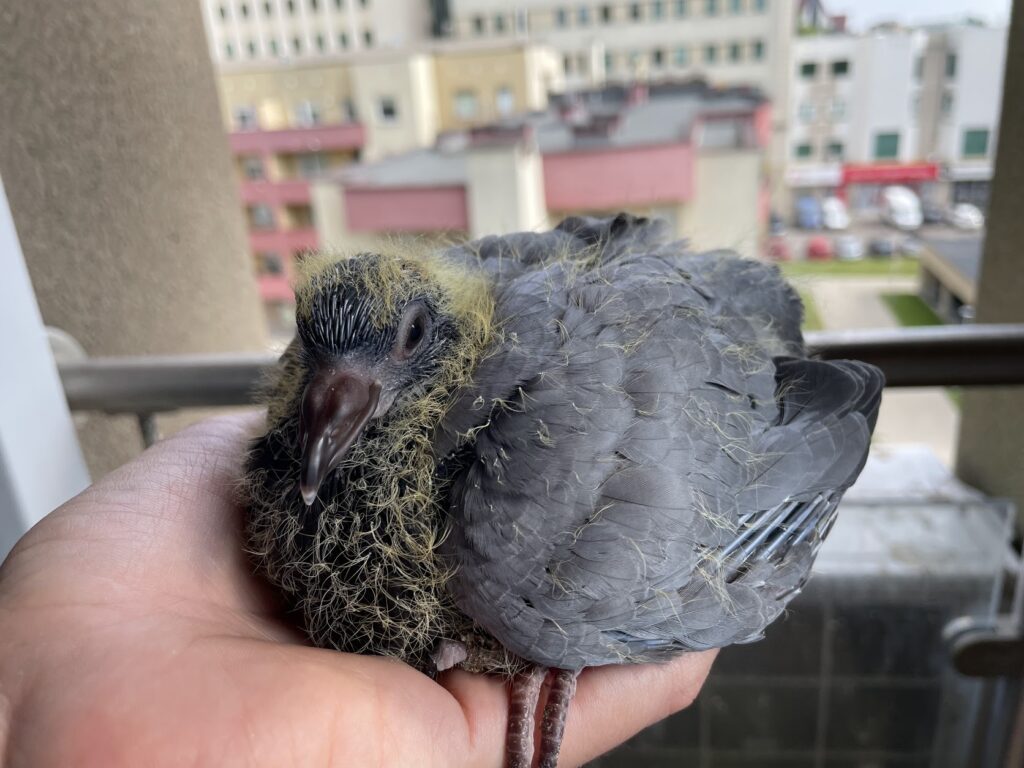
Pigeons breed year-round
Pigeons, also known as rock doves, are known for their ability to breed throughout the year, with peak breeding seasons occurring in spring and fall.
- This means that there are always eggs being laid and chicks hatching in pigeon nests, rather than a concentrated breeding season like some other bird species.
- As a result, city pigeons, or feral pigeons, can be found breeding and raising chicks at any time of the year.
- However, it is worth noting that in the colder months of winter, there may be fewer baby pigeons due to the challenges of raising chicks in cold weather.
Pigeon parents rely on a consistent food supply to feed their growing chicks, and harsh weather conditions can make it more difficult to find food. Additionally, the nest itself may be more exposed to the elements in the winter months, which can be harmful to young chicks.
Despite these challenges, pigeons are still able to breed throughout the year and raise chicks in a variety of conditions. This continuous breeding cycle contributes to the abundance of pigeons in urban areas and helps to ensure the survival of the species.
However, it also means that baby pigeons are constantly being born and growing up, making them less visible to the casual observer.
Check this out: What Does A Baby Pigeon Look Like?
Pigeon nests are well-hidden
In this section, I will examine how pigeon nests are often well-concealed and located in a variety of locations, which makes it difficult to spot eggs or baby birds.
- Pigeons build their nests in a variety of locations, including ledges, windowsills, and even on top of streetlights.
- These nests are often well-concealed, making it difficult to spot eggs or chicks.
- Additionally, pigeons are known for their territorial behavior, which may discourage predators from approaching their nests.
- Pigeon nests are often well-concealed, making it difficult to spot eggs or chicks.
- This can be especially true for urban pigeons, which have adapted to living in close proximity to humans and have learned to take advantage of the many hiding places available in the built environment.
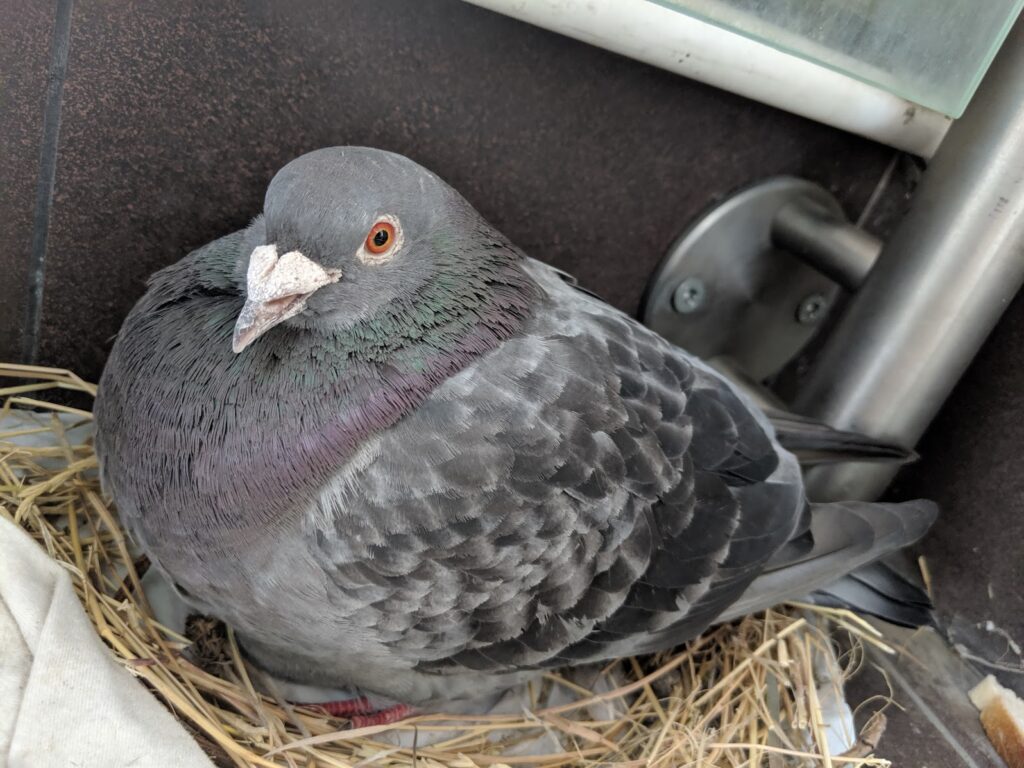
Some common locations for pigeon nests include:
- Ledges of tall buildings
- Windowsills
- Streetlights
- Balconies
These locations provide a safe and secure spot for adult pigeons to raise their young, while also being relatively hidden from view.
Overall, the well-hidden nature of pigeon nests helps to ensure the survival of the species and contributes to the fact that we don’t see pigeon babies as often as we might expect.
You will like: How Many Eggs Does A Pigeon Lay?
Pigeon babies grow quickly
In this section, we will examine how pigeon chicks, also known as “squabs,” grow quickly and are able to fly at a young age.
- Pigeon chicks, also known as “squabs,” grow quickly and are able to fly at a young age.
- This rapid growth allows them to leave the nest and explore their surroundings at a younger age than many other bird species.
- Within a few weeks of hatching, squabs are covered in feathers and resemble small versions of adult birds.
- As they grow, they become more independent and are able to forage for food on their own.
- Juvenile pigeons, or young pigeons that have left the nest but are not yet fully mature, can often be seen alongside adult birds as they learn the skills necessary for survival.
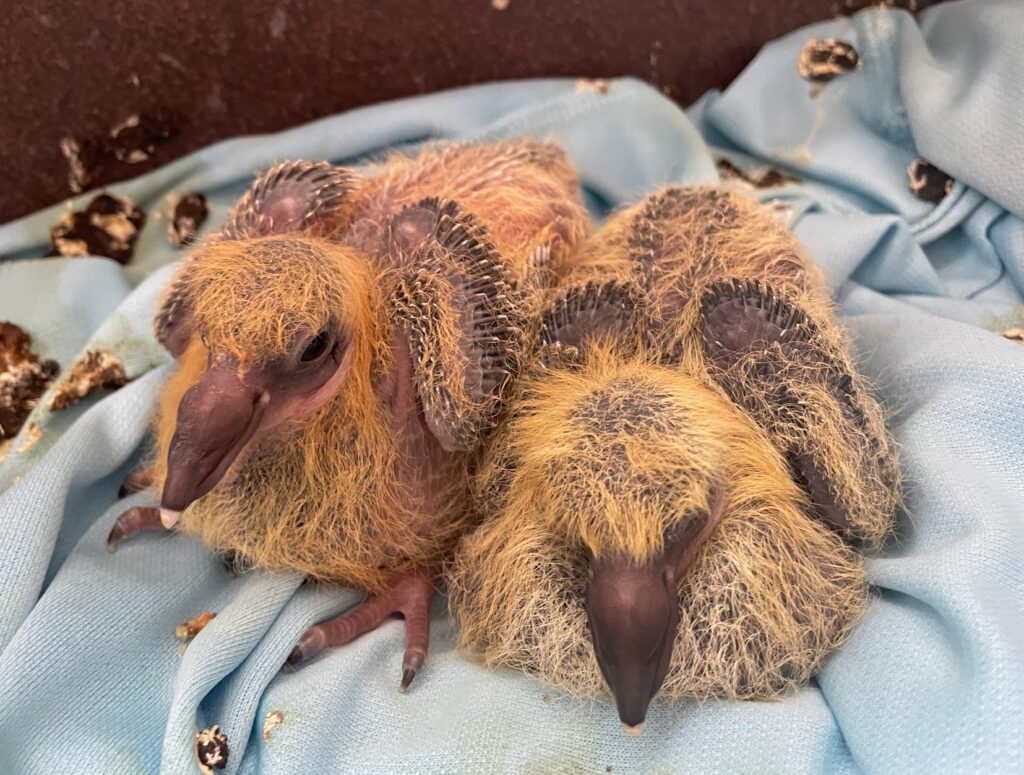
The rapid growth and early independence of pigeon chicks contributes to the fact that we don’t see baby pigeons as often as we might expect.
As they grow and become more self-sufficient, they are able to leave the nest and venture out into the world, making them less visible to the casual observer.
However, this quick development is also a key factor in the survival of the species, as it allows young pigeons to quickly become independent and contribute to the population.
Don’t miss this: How Long Do Pigeons Live?
I rescued a baby pigeon
I rescued Gerard, a baby pigeon, from a group of predators when he was just a few days old. He had been left alone in the frost, and his sibling had been killed. His parents had abandoned him, and he was in dire need of help.
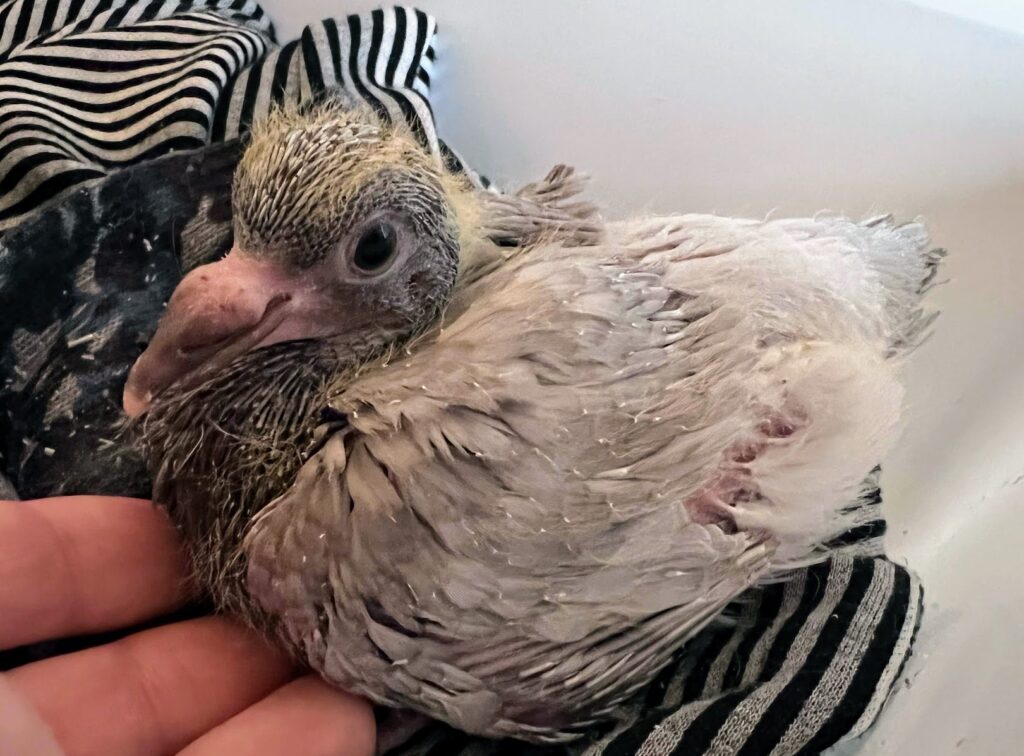
I knew I had to do something to save him, so I carefully scooped him up and brought him home with me. I knew that raising a baby pigeon would be a lot of work, but I was determined to do everything I could to help him thrive.
I made sure he had a warm and safe place to sleep, and I fed him a special formula every few hours to help him grow strong and healthy.
Despite the challenges, Gerard quickly became a beloved member of my household. He is now a happy and healthy adult pigeon, and I am grateful every day for the joy he has brought into my life.
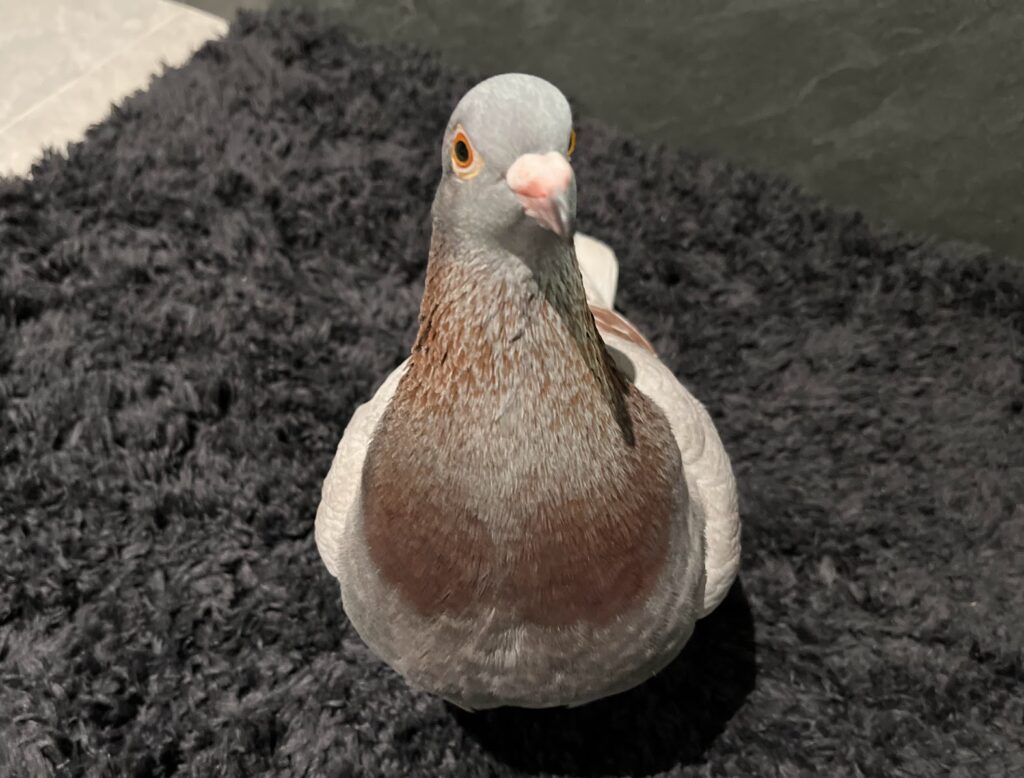
Frequently asked questions (FAQs) about baby pigeons
Here are some common questions about baby pigeons:
Why don’t we see baby pigeons as often as we might expect?
Baby pigeons are not as visible as adult pigeons because they are often well-hidden in pigeon nests and grow quickly, leaving the nest at a young age.
How do pigeon chicks grow so quickly?
Pigeon chicks, also known as “squabs,” grow quickly due to their high metabolism and the constant supply of food provided by the mother pigeon.
What do baby pigeons look like?
Baby pigeons, or squabs, are born naked and blind, but within a few weeks they are covered in feathers and resemble small versions of adult pigeons.
How long do baby pigeons stay in the nest?
Baby pigeons, or squabs, typically stay in the nest for 4-6 weeks before they are ready to fledge, or leave the nest to fly.
Do pigeon parents care for their young in the same way as other bird species?
Like many other birds, rock pigeons, or feral pigeons, care for their young by incubating eggs and providing food for chicks once they hatch. However, pigeons are known for their ability to produce “pigeon milk,” a secretion that is rich in nutrients and helps to feed chicks in the early stages of life.
How do baby pigeons learn to fly?
Baby pigeons, or squabs, typically fledge, or leave the nest to fly, at around 4-6 weeks of age. They practice flying by flapping their wings and jumping from perches, with adult pigeons often providing guidance and support.
Can baby pigeons be raised by humans?
It is possible for humans to raise baby pigeons, but it requires a significant commitment and a thorough understanding of the species’ needs. Baby pigeons have a high metabolism and need to be fed frequently, and they also require a clean and safe environment to thrive. It is important to understand that pigeons are wild animals and may not be suitable as pets for everyone.
Is it legal to keep baby pigeons as pets?
The legality of keeping baby pigeons as pets varies by location and may be regulated by local ordinances or wildlife laws. In some areas, it may be legal to keep baby pigeons as pets, but in others it may be illegal to possess or care for wild animals without a special permit. It is important to research and understand the laws in your area before attempting to raise a baby pigeon.
What is the best way to observe baby pigeons in the wild?
The best way to observe baby pigeons in the wild is to approach their nests with caution and respect. Avoid disturbing the nest or adult pigeons, and watch from a distance to minimize the impact on the birds. If you are interested in observing a baby pigeon up close, consider visiting a wildlife rescue centre where you can observe these fascinating birds in a controlled and ethical way.
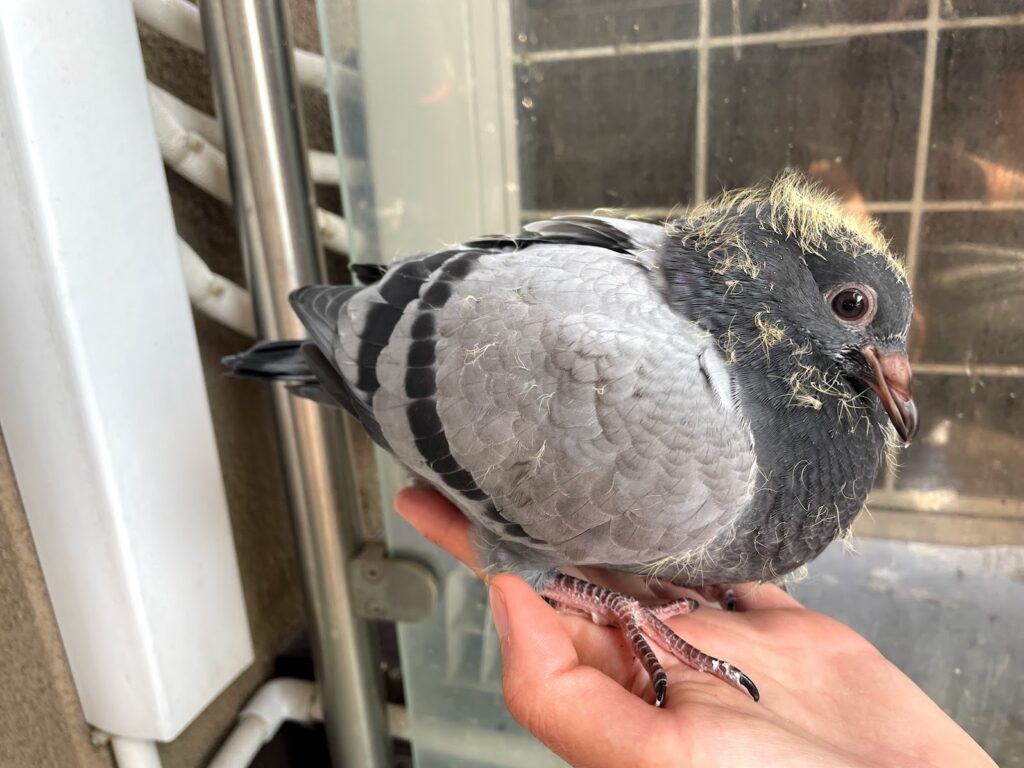
How can we help protect baby pigeons and support their populations in urban areas?
- There are several ways to help protect baby pigeons and support their populations in urban areas:
- Provide a clean and safe environment for pigeons to breed and raise their young.
- Avoid disturbing pigeon nests or harassing adult pigeons.
- Avoid feeding pigeons unhealthy or inappropriate foods, as this can harm their health and reproduction.
- Support organizations that work to protect and conserve pigeon populations.
If you like this article, you will also love the articles:
Why don’t we see baby pigeons? Final thoughts!
While we may not see baby pigeons as often as we might expect, this is due to a combination of their year-round breeding habits, well-hidden nests, and rapid growth.
Next time you spot a pigeon, keep an eye out for any hidden nests or young chicks!

